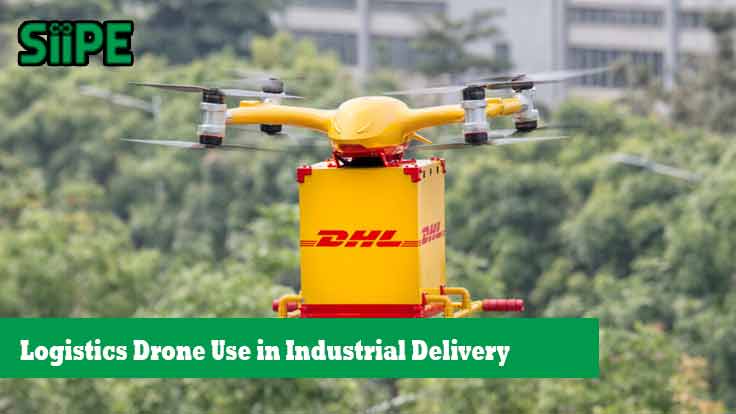In today’s rapidly evolving industrial landscape, speed and efficiency are no longer optional—they are essential. Traditional methods of industrial delivery, while reliable, are often hampered by traffic congestion, human error, and rising fuel costs. In response, many industries are exploring the revolutionary use of logistics drones to streamline operations and gain a competitive edge.
Drones, or unmanned aerial vehicles (UAVs), are now being deployed to handle time-sensitive deliveries across manufacturing sites, warehouses, and distribution centers. Not only do drones accelerate delivery times, but they also reduce costs and environmental impact. As the technology matures, the role of drones in industrial logistics is expected to grow dramatically.
Why Use Drones in Industrial Delivery?
There are several reasons why drones are becoming more prevalent in industrial logistics. First and foremost, drones can navigate difficult terrain and urban congestion with ease. Secondly, they reduce the reliance on fuel-heavy transport, which helps companies reduce carbon emissions. Furthermore, they can deliver goods to remote areas where conventional transportation is either slow or not feasible.
For example, a manufacturing facility in a rural location may experience significant delays due to poor road conditions. A logistics drone, on the other hand, can bypass these limitations by flying directly from point A to point B. As a result, parts and supplies can be delivered more swiftly, minimizing production downtime.
Key Benefits of Drone-Based Industrial Delivery
1. Speed and Efficiency
Drones can fly over traffic and deliver items in a fraction of the time it would take a delivery truck. This is especially beneficial for industries that rely on just-in-time (JIT) supply chains, where every second counts.
2. Cost Reduction
Although the upfront investment in drone infrastructure can be substantial, operational costs are significantly lower over time. Companies can save on fuel, vehicle maintenance, and labor costs.
3. Environmental Sustainability
Electric-powered drones produce zero emissions, making them an eco-friendly option for forward-thinking businesses. By switching to drones, companies can significantly reduce their carbon footprint.
4. Improved Safety
Drone deliveries minimize the need for human drivers in hazardous or high-risk zones, such as chemical plants or mining sites. This can lead to fewer accidents and enhanced workplace safety.
5. Access to Remote Locations
Some factories or industrial sites are located in hard-to-reach areas. Drones can provide consistent access to these locations, even during floods, road blockages, or natural disasters.
Use Cases in Industrial Settings
a. Spare Parts Delivery
Imagine a machine breaking down in a factory. Instead of waiting hours for a replacement part to arrive, a logistics drone can deliver it within minutes, reducing downtime significantly.
b. Inter-Warehouse Transport
Large industrial zones often operate several warehouses. Drones can help transport inventory or documents quickly between locations, enhancing internal coordination.
c. Safety Inspections and Surveillance
Beyond delivery, drones are also used for industrial surveillance, safety monitoring, and infrastructure inspection—adding even more value to logistics operations.
d. Emergency Medical Supply Delivery
Factories with large workforces benefit from drone-delivered first aid kits, medical samples, or even automated external defibrillators (AEDs) during emergencies.
Challenges in Implementing Drone Logistics
Despite the potential, there are several hurdles to wide-scale adoption.
1. Regulatory Barriers
In many countries, drone use is tightly regulated. Flight altitude, range limitations, and permissions from aviation authorities must be addressed.
2. Payload Capacity
Most commercial drones can carry only a limited weight—typically less than 5 kg. For heavier industrial goods, hybrid solutions may still be needed.
3. Weather Sensitivity
Drones are sensitive to wind, rain, and other environmental conditions. This affects reliability, especially in tropical or storm-prone regions.
4. Cybersecurity Risks
Drones can be vulnerable to hacking, GPS jamming, or data interception. Ensuring secure communication protocols is crucial for industrial deployment.
How to Prepare for Drone Integration
Companies looking to adopt drone logistics must follow a strategic approach:
-
Conduct feasibility studies to evaluate which operations can benefit from drone use.
-
Choose the right drone model based on payload requirements, flight range, and environment.
-
Partner with certified drone operators to ensure compliance with aviation laws.
-
Invest in training for staff and implement SOPs for drone deployment.
-
Integrate drone data with warehouse management systems (WMS) or ERP platforms for real-time coordination.
By taking these steps, industries can ensure a smooth transition from traditional delivery systems to drone-assisted logistics.
The Future of Drone Logistics in Industry
As drone technology becomes more advanced and regulations adapt, their role in industrial delivery will expand rapidly. The integration of AI-powered route planning, autonomous flight systems, and real-time inventory tracking will further enhance efficiency.
Companies such as Amazon, DHL, and Zipline are already investing heavily in logistics drones. This shows that drone delivery is not just a futuristic concept—it’s happening now.
In addition, industrial parks and zones are starting to design their infrastructure with drone pathways, landing zones, and air traffic control systems in mind. In countries like Indonesia, regions with vast industrial potential such as Kawasan Industri Medan are well-positioned to be early adopters.
The use of drones in industrial delivery is more than just a trend—it is a pivotal innovation transforming how industries operate. From reduced costs to faster turnaround times, the benefits are undeniable. Although challenges remain, with proper planning and investment, drone logistics can revolutionize industrial supply chains and create a more agile, sustainable, and resilient future.
Industries that embrace this change today will not only improve their operational efficiency but also position themselves as leaders in the next wave of technological evolution.











